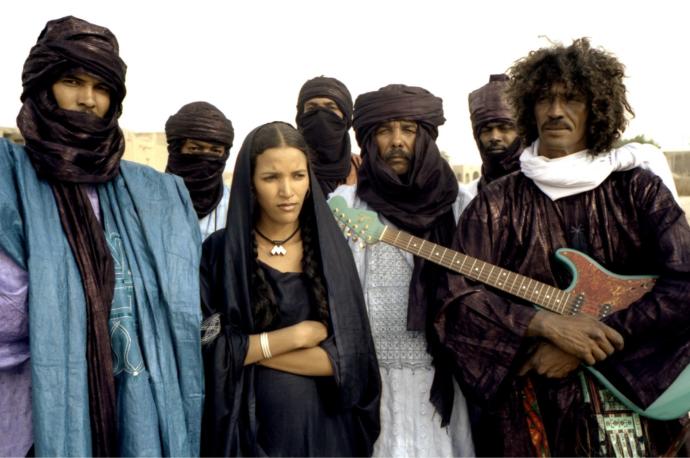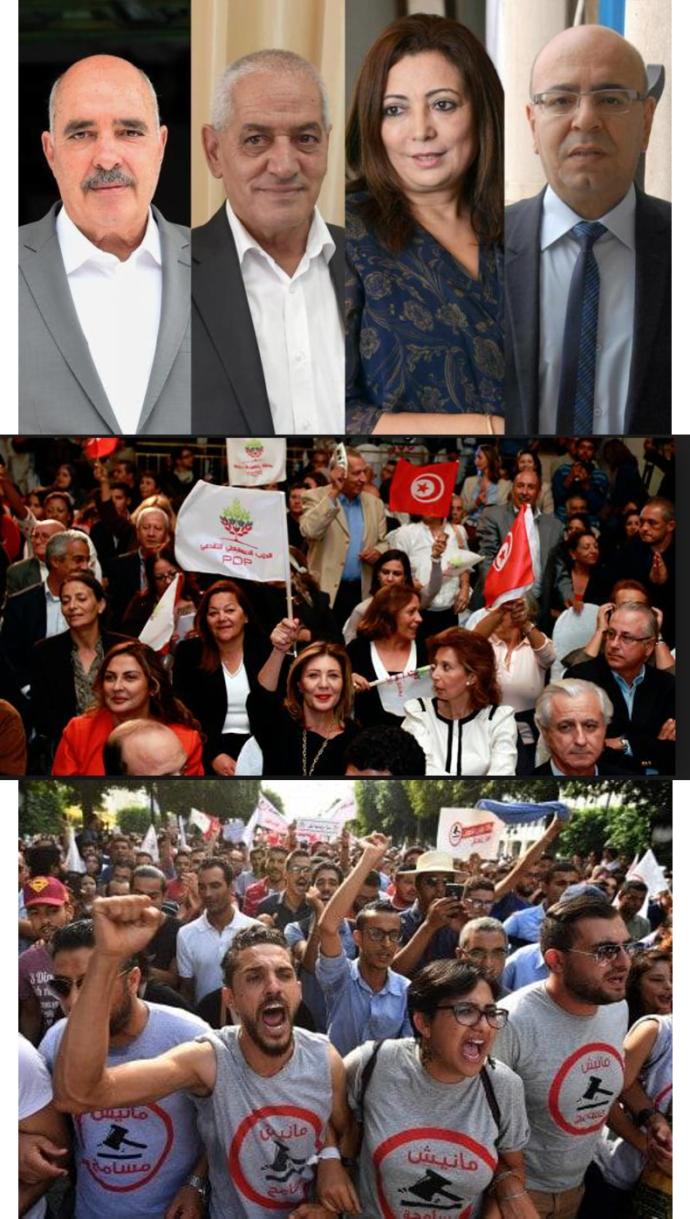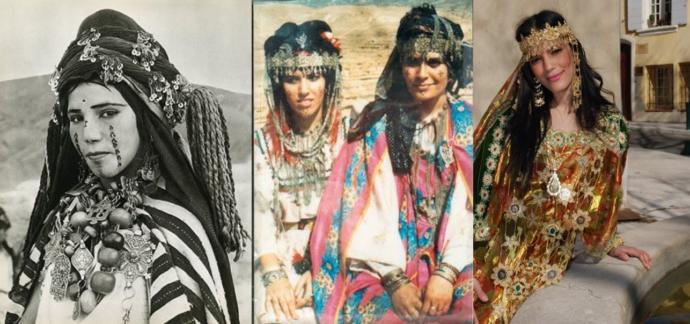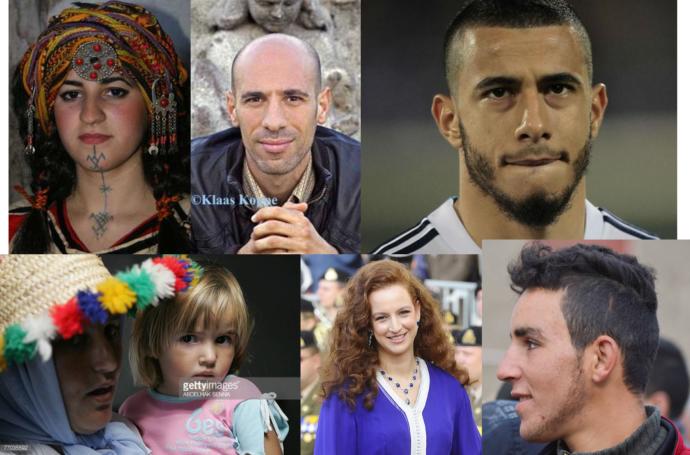
Amazigh flag: The blue symbolizes the Mediterrenean sea, the green is the Atlas mountains, the yellow is the Sahara desert and the center symbol symbolizes the free man.
Hi! I have decided to write this MyTake for multiple reasons:
- First, it’s to shed some light on the indigenous people of North Africa since not many people know about us. Indeed, I have already been asked “You’re African, how aren’t you black?” in my DM’s here on GaG.
- But I have also came across many Afrocentrists online who share historical fallacies about ancient North Africans and North African personalities, and as someone who is passionate about ancient history and antiquity, it bothers me because it feels like those afrocenstrists are stripping us modern North Africans from our ancestry and history by claiming it as their own (they claim that Ancient North Africans look more like them, than they look like us Modern day North Africans).
- And last but not least, it’s to tackle the fact that Americans tend to have a dichotomic view on this matter, it appears that they believe that every white skinned person is European, and every dark skinned person is Subsaharian.
North Africans/Amazighs are their own ethnic group, on average, they are neither Black, nor White nor Arab (semetic). On average, we are brown Caucasians. Darker than Europeans but lighter than most Indians, most Native Americans and obviously Sub-Saharian Africans.
1. North African indigenous people are called Amazigh (we prefer this term) or Berber
Depending on where you are in North Africa, those Berbers got mixed with different peoples, including Romans , Arabs, Spaniards, Phoenicians, Germanic, Sub Saharians and Ottoman/Turkish. Nonetheless, we are still mostly Berber despite our racial mixing and mosaic.
"Pure" berbers can still be found in some regions in the mountains of Morocco , Algeria and Tunisia.
2. A lot of us, including me, are in fact Arabized Berbers/Amazighs
Which means that we are genetically Berbers but adopted the Arabic language (just like how native Americans adopted the Spanish language).
But many of us still hold into their languages and didn't get Arabized ,especially in Morocco and Algeria (not so much in Tunisia).
3. Amazigh people are mostly concentrated in:

4. There are different tribes of Amazigh people, who share different physical characteristics and genetics.

Amazigh people look very diverse and can go from the lightest to the darkest depending on:
-The tribe and region they come from (but variations also exist within the same tribes).
- The foreign peoples they eventually got mixed with, including Arabs, Southern Europeans and Blacks.
The different Amazigh peoples are linked by their languages that are part of the Tamazight language family, more than they are by their genes. In fact, Berbers at the south of Tunisia , Algeria and Morocco look quite different from more northern Berbers (they are more influenced by Sub-Saharan Africa than most modern day Algerians, Tunisians and Northern Moroccans).
5. Some berbers are black like the Tuareg people

The tuaregs are a nomadic people who live in the Sahara desert. Mostly in southern Algeria, southern Libya, Mali etc.
The Sahara Desert and Atlas mountains played an important role as a genetic and cultural barrier between North Africa and Sub-Saharan Africans
The Sahara Desert and Atlas mountains played an important role as a genetic and cultural barrier between North Africa and Sub-Saharan Africans but the Tuaregs were the brave traveller of the Sahara Desert. They are a nomadic people and genetically an intermediary between darker sub-Saharan Africans at the south, and lighter caucasian Berbers at the north which explains their dark skin, but their more Caucasoid features compared to sub-Saharan Africans (they are semi Caucasian).
But when Afro-centrists claim our history (Moors and Carthaginians), they are claiming the history of the peoples who live in modern day Tunisia, Northern and Coastal Algeria + Morocco who weren’t black but were Olive-skinned Caucasians (Chaouis, Kabyles, Tunisian Berbers, Riffians etc...).
The Egyptians painted the North African "Libyans" (which meant the people to the West of them in North African) for example like this:
The order is: Berbers (or Libyans), Nubian, Levant People (where Phoenicia would be later in history), and Egypt.
5. Modern day north Africans don’t look much different from ancient north Africans:


Not like this (as Afro-centrists claim) :
If anything, they got darker from slavery after 700 AD and from the fact that some North African kingdoms most probably had darker Berbers and Africans fight for them in their armies, especially in Morocco (which is why they have more individuals with Sub-Saharian features than Algerians and Tunisians).
If anything, we got darker from slavery after 700 AD
Same could be said about Pheonician and Arab civilizations. Although Arabs and Phoenicians influenced, to a small extent the genetics of some North Africans, especially Tunisians, it’s important to note that there was never a mass immigration from the Levante to Carthage. A few merchants arrived and inter-married with the locals. As for the Arabs, they also intermarried with Berbers and never replaced the original inhabitants who are still to this day mostly Berber and not so different from the ancient population.
A reconstruction based on the body and DNA of an ancient Carthaginian man from Tunisia
6. Our origin is quite unknown.
But we know that Caucasian Berbers have been living in north Africa for at least 22 000 years.
Many different theories exist surrounding our origin. Some people claim a Eurasian ancestry from the East, or a levantine and Middle Eastern origin while some claim an east African ancestry. Others say that we moved back and forth between north Africa and the Iberian Peninsula (modern Spain and Portugal).
7. A few examples of the different tribes and different looks of North Africans
- The Kabyles of North Algeria (known for being some of, if not the lightest Native North Africans).

- My Ethnicity, the Chaouis (Western Algeria and Eastern Tunisia)



- Chleuh (Morocco)

- Riffians (Northern Morocco)

- Berbers of the Tunisian Desert/South

8. Other samples from the Football teams of North African countries
Tunisian team

Algerian team

Moroccan team


Most Helpful Opinions